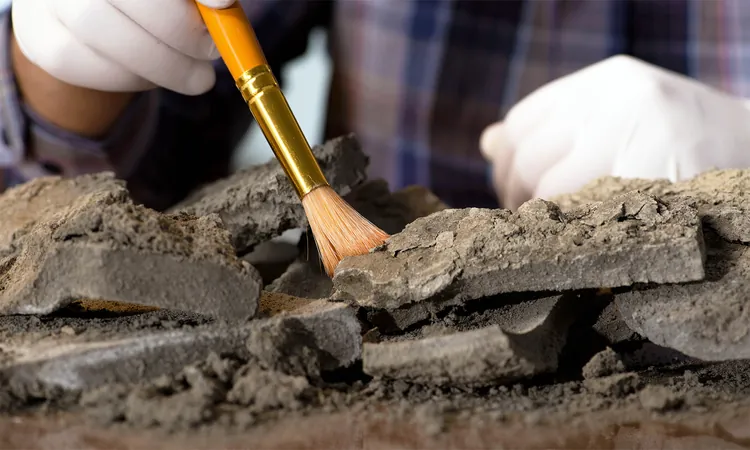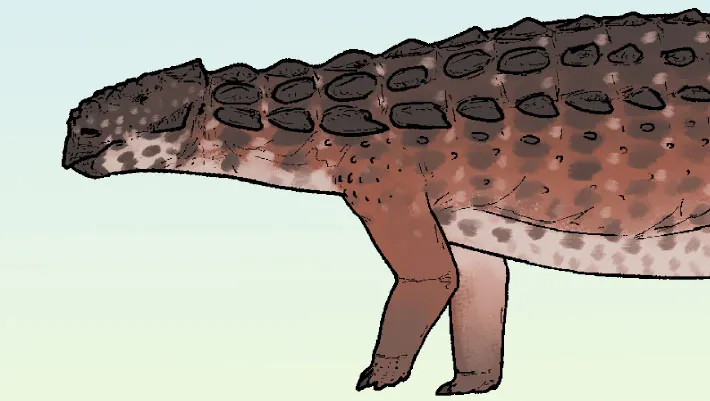
Astonishing 520-Million-Year-Old Fossil Unveils Brain and Guts, Shocking Scientists!
2025-06-15
Author: Sophie
A Glimpse into the Cambrian Era
Imagine a time 520 million years ago when life in the oceans was an experimental playground, giving rise to the complex creatures we see today! Enter the Cambrian period: an age marked by radical body designs as early forms of life strove to figure out what worked best.
The Marvel of Youti yuanshi
Meet Youti yuanshi, a strikingly preserved fossil larva no bigger than a poppy seed, discovered by a team led by Dr. Martin Smith at Durham University. Unlike typical fossils that only reveal flattened outlines, this remarkable find boasts a 3D structure, giving scientists unprecedented insights into early arthropod anatomy.
Unlocking Nature’s Secrets with Advanced Technology
Thanks to cutting-edge synchrotron X-ray tomography at the UK’s Diamond Light Source, researchers were able to peer inside Youti’s tiny body. What they uncovered was astounding: identifiable brain regions, digestive glands, a primitive circulatory system, and even nerve traces extending to the larva's basic limbs and eyes.
A Revelation in Arthropod Evolution
The discovery of Youti yuanshi signals a paradigm shift in understanding how arthropods evolved. Dr. Smith expressed his excitement, noting that he had long dreamed of finding a well-preserved arthropod larva. The intricate features discovered still intact after half a billion years challenge long-held assumptions about the fragility of such organisms.
Fossils as Keys to Evolutionary Mysteries
Dr. Katherine Dobson, a co-researcher, was equally amazed by the fossil's almost flawless preservation. This discovery not only illuminates the evolution of multi-limbed creatures but also offers clues to the development of complex anatomical structures like the 'protocerebrum,' a crucial brain region that set the stage for the evolution of advanced organisms.
Broader Implications for Biodiversity
Youti yuanshi isn't just a treasure trove for evolutionary biologists; it also prompts broader considerations of biodiversity. Understanding the anatomy of ancient species enriches our comprehension of the vast array of life forms we see today. It serves as a vivid reminder of the intricate web of relationships that have shaped the living world.
Looking Ahead: Future of Research on Insect Evolution
The unveiling of Youti yuanshi opens exciting avenues for research in evolutionary biology and paleontology. With hopes of uncovering more fossils that narrate the story of early life, scientists are eager to utilize advanced imaging techniques to explore the complexities of our planet's biological history. This tiny fossil proves that even the smallest discoveries can dramatically alter our understanding of evolution.
Preserving Our Planet’s History
Now housed at Yunnan University in China, the Youti yuanshi fossil encapsulates the essence of our evolutionary journey, reminding us of the significance of fossils in piecing together Earth’s ancient past. Get ready; future digs armed with modern technology will likely reveal even more captivating stories from deep within our planet’s history.









 Brasil (PT)
Brasil (PT)
 Canada (EN)
Canada (EN)
 Chile (ES)
Chile (ES)
 Česko (CS)
Česko (CS)
 대한민국 (KO)
대한민국 (KO)
 España (ES)
España (ES)
 France (FR)
France (FR)
 Hong Kong (EN)
Hong Kong (EN)
 Italia (IT)
Italia (IT)
 日本 (JA)
日本 (JA)
 Magyarország (HU)
Magyarország (HU)
 Norge (NO)
Norge (NO)
 Polska (PL)
Polska (PL)
 Schweiz (DE)
Schweiz (DE)
 Singapore (EN)
Singapore (EN)
 Sverige (SV)
Sverige (SV)
 Suomi (FI)
Suomi (FI)
 Türkiye (TR)
Türkiye (TR)
 الإمارات العربية المتحدة (AR)
الإمارات العربية المتحدة (AR)